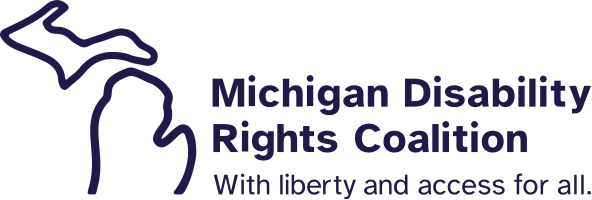What WCAG 2.1 Means for Access
Wednesday, January 2, 2019
Introduction
I attended the Accessible Learning Conference at Michigan State University in December of 2018. There were many interesting presentations, but the one that helped me the most was a discussion of the new additions to the web and mobile accessibility standards, known as WCAG 2.1. The standard itself is pretty dense, and I found that this presentation’s focus on those success criteria improvements that have clear value for all of us was very helpful.
The presentation was titled, “What’s New in WCAG 2.1“, and the presenter was Graham L. Pierce, Assistant Director, MSU Usability/Accessibility Research and Consulting. His overview of the portion of the additions that could be worked on now (as opposed to those additions that were very technical), gave me the courage to revisit the standard and to summarize the changes.
There is not an expectation that these new criteria will suddenly be implemented. Rather, the new criteria allow developers and organizations to begin the implementation rolling out success over time.
New Success Criteria:
Orientation (1.3.4)
Here, orientation refers to the familiar “portrait” vs. “landscape”. The criterion says that the user (say, you on your smartphone) should be able to choose the orientation to fit your immediate needs. Exceptions to this include things like a bank check, a piano application, slides for a projector or television, or other situations in which a specific orientation is essential to make use of the content.
Identifying the Purpose of an Input (1.3.5)
The point of this criterion is to make sure the user understands why and what they are inserting into an input field about themselves before they do it.
Reflow (1.4.10)
The reflow criterion makes sure that you can access and use the content on a mobile phone without losing any functions and without scrolling, a pet peeve of mine now.
Non-Text Contrast (1.4.11)
This criterion requires that there be significant color contrast between user function elements, graphical content necessary to understand or use the overall content, and any nearby elements on the screen. Meeting this criterion will make sure people with a variety of visual disorders can make use of the content.
Text Spacing (1.4.12)
These standards make reading text easier for everyone and are similar to what you might see in a word processor program’s default style.
Content on Hover or Focus (1.4.13)
If your pointer, however that is defined on your device, triggers some additional content, you can get rid of it or use the new content without losing it by moving over it. (Another pet peeve).
Character Key Shortcuts (2.1.4)
If a keyboard shortcut only uses a letter, punctuation, number, or symbol, there is a way to turn it off or remap so that the user can make complete use of the keyboard for navigation and use of content. Important for people with visual impairments and some mobility impairments among others.
Pointer Gestures (2.5.1)
With the spread of gesture-based control of mobile platforms, multiple step or path gestures must be reducible to one step. Important for persons with mobility impairments among others.
Pointer Cancellation (2.5.2 )
If you can trigger something with one pointer, there has to be a way to cancel or abort the process, so you aren’t stuck.
Label in Name (2.5.3)
A label is usually presented to all users, but a name is often embedded in the page code and is only available to users of screen readers and other assistive technology. If the label is not available to the AT, the user misses out on important content. This criterion says that the name should have the same content as the label for text and images of text so that it is available to the assistive technology and the user. This criterion also sets a standard for how label and name are organized in the page code.
Motion Actuation (2.5.4)
Anything you can do through your own motion or motion of the device needs to be available without motion and prevented if there is accidental motion. This is useful for users who have invountaray motions among others.
Status Messages (4.1.3)
This allows status messages to be presented to assistive technology without requiring the user to focus on the trigger of the status message. It might well be impossible for the user to focus on the trigger, so this expands the ability of AT to present all the content.
Full pages (CR2 (5.2.2))
Success in all these criteria is based on the entire page of content. So no partial success for parts of a page, except when the content is from a third party and you have no control over it. This is a critical “meta” standard that helps prevent gaming of accessibility standards.
All of the available presentation materials at the ALC can be found and downloaded on the Detailed Schedule Page for the conference.

